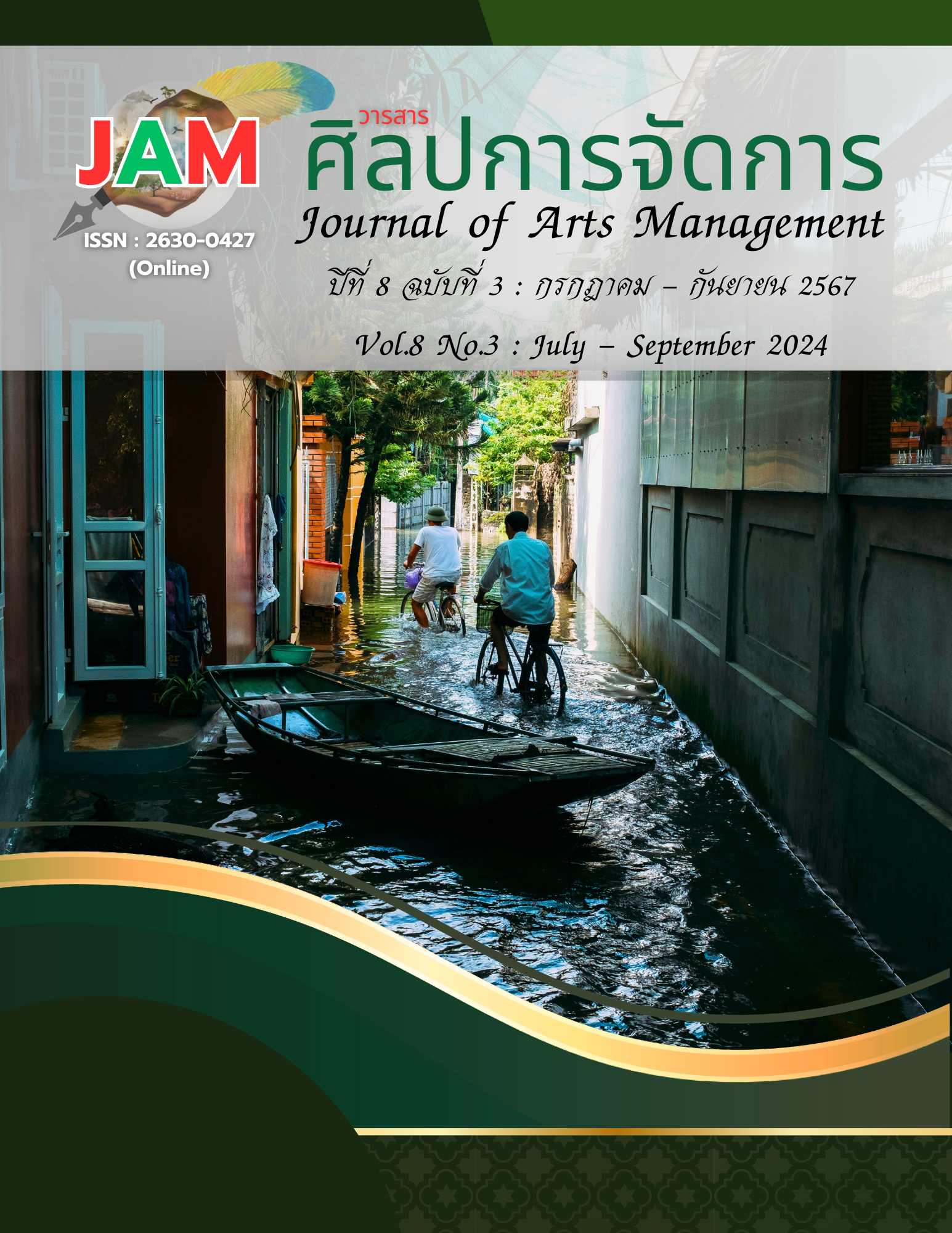Success of the Implementation of Elderly Welfare System Policy Under Sustainability Principles in the Northeast of Thailand
Main Article Content
Abstract
The research at hand is a study of Research and Development (R&D) aimed at 1) examining the success factors of implementing policies for the elderly welfare system in the northeastern region of Thailand. 2) comparing the success of implementing policies for elderly welfare under the sustainable development principles in the northeastern region, classified by the characteristics of the sample population. 3) explaining the relationship between factors that affect the success of implementing policies for elderly welfare under the sustainable development principles in the northeastern. 4) evaluating the success of implementing policies for elderly welfare under the sustainable development principles in the northeastern region of Thailand. 5) proposing a model for the success of implementing policies for elderly welfare under the sustainable development principles in the northeastern region. The population is elderly with welfare of 3,386,357 people in 20 provinces in the Northeast. The researcher has determined the sample group used in the study at the confidence level of 95 percent using the Krejcie & Morgan (1970). A total of 400 samples were used in this study by stratified random sampling and purposive sampling methods. Key informants are fifteen government agencies involved in policy implementation requirements (with at least seven years of policy driving experience) by using the purposive sampling method and having a focus group.
A data analysis of the elderly welfare system's needs revealed that, in general, the demand for the elderly welfare system is high ( =3.64, SD=0.43). The analysis of the data regarding the needs of the elderly welfare system reveals that the implementation of elderly welfare policies, in general, is at a high level (
=3.95, S.D.=0.51). According to the management structure that emphasizes working according to function and top-down command, management is carried out in the form of "covering the ground" and overlooks the potential and diversity of the area.
Article Details

This work is licensed under a Creative Commons Attribution-NonCommercial-NoDerivatives 4.0 International License.
Views and opinions appearing in articles in the Journal of Arts of Management It is the responsibility of the author of the article. and does not constitute the view and responsibility of the editorial team I agree that the article is copyright of the Arts and Management Journal.
References
Barker, L. (1987). An introduction to small group communication (3rd ed.). Prentice Hall.
Chaiyasat, C. (2020). Potential development of the elderly in the Lower Northeastern Region 2. Journal of MCU Ubon Review, 5(2). 623-638.
Department of Elderly Affairs. (2021). Measures to drive the National Agenda on the Elderly Society (Revised Edition). Amarin Printing and Publishing.
Friedlander, W. A., & Apte, R. Z. (1980). Introduction to social welfare (5th ed.). Prentice-Hall.
Insuk, R., & Rojanatrakul, T. (2021). The study of social welfare management for the elderly in Kamphaengdin Sub-district Administrative Organization, Sam Ngam District, Phichit Province. Journal of Modern Learning Development, 6(3), 193-208.
Karma, B., Ada-Katrin, B., & Händler-Schuster, D. (2021). Exploring health-related needs of elderly people (70+) at home: A qualitative study from Switzerland. Journal of Primary Care & Community Health, 12. DOI: 10.1177/21501327211055635
Krejcie, R.V., & D.W. Morgan. (1970). Determining sample size for research activities. Educational and Psychological Measurement, 30(3), 607-610.
Pochanukul Suzuki, P. (2009). Literary review and knowledge synthesis: “Community welfare in Thailand”. Project to Strengthen Learning for Happy Communities.
Sumini, Sukamdi, Pangaribowo, E. H., Keban, Y. T., & Darwin, M. (2020). Elderly care: A study on Community Care Services in Sleman, DIY, Indonesia. Journal of aging research, 2020, 3983290. https://doi.org/10.1155/2020/3983290
United Nations. (2015, July 29). UN projects world population to reach 8.5 billion by 2030, driven by growth in developing countries. https://news.un.org


